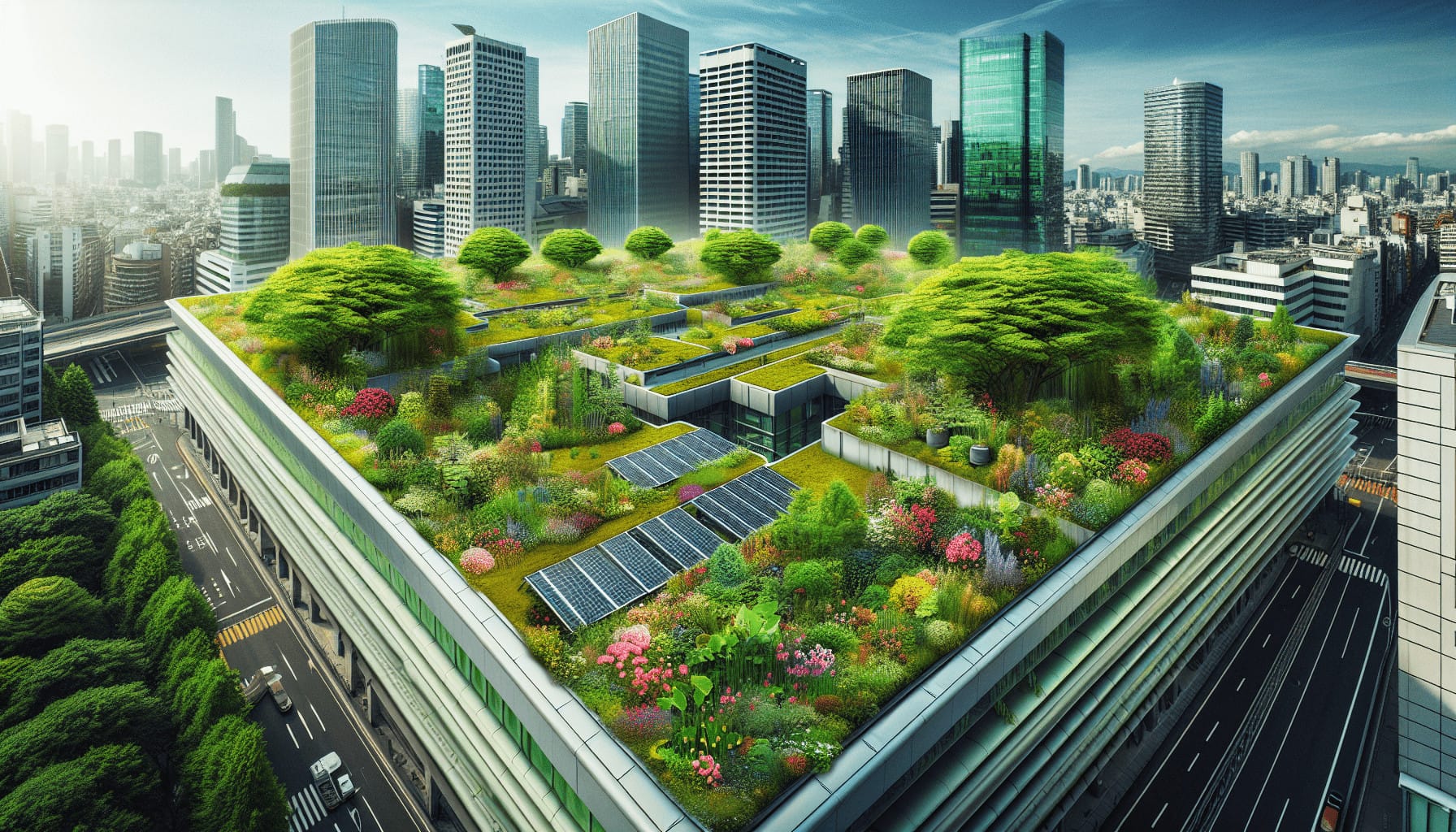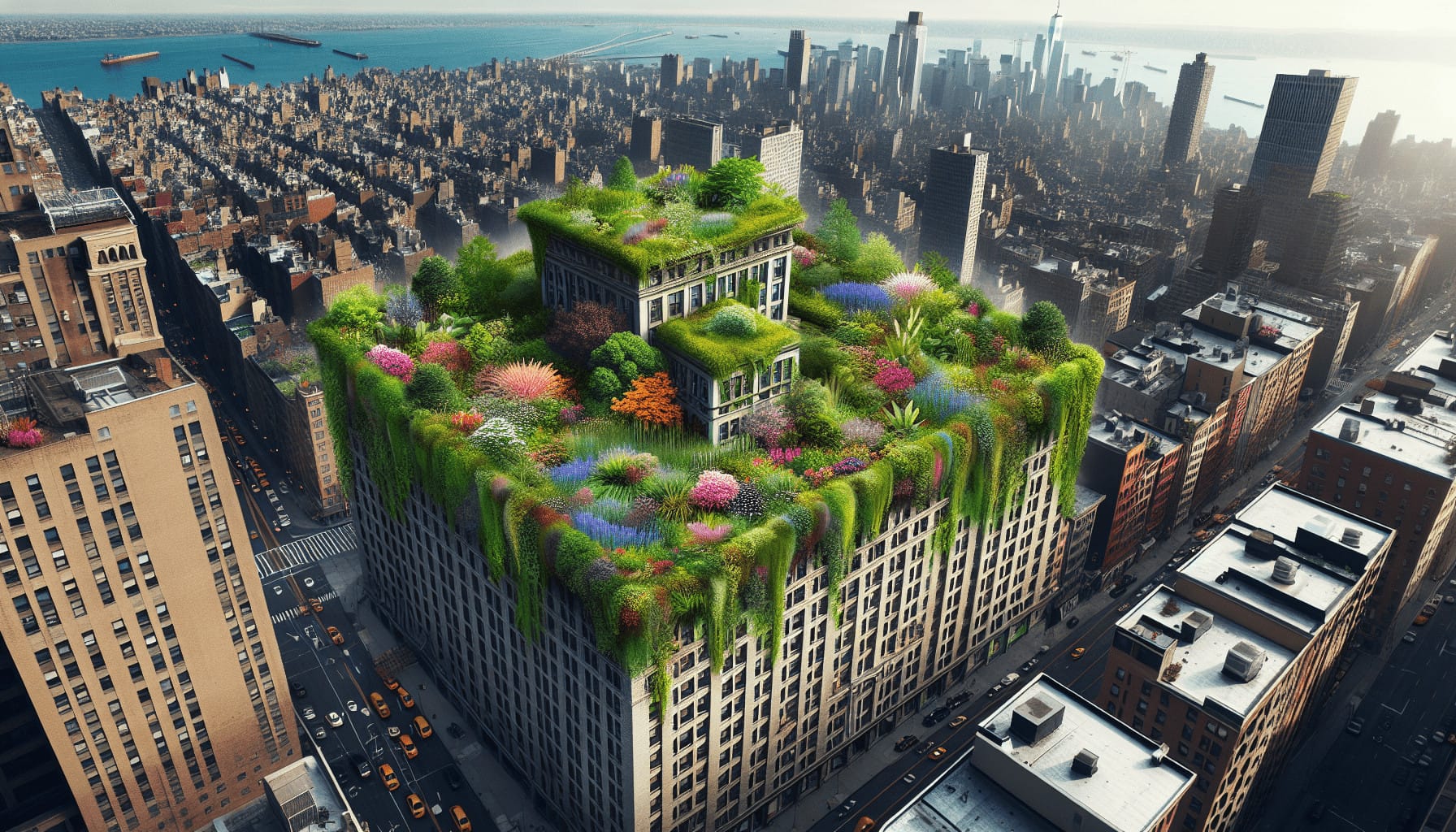Have you ever considered how investing in a green roof might impact not just the environment, but your wallet too? In recent years, green roof systems have captured the attention of environmentally conscious individuals and businesses alike. These innovative solutions offer more than just aesthetic appeal; they provide tangible benefits that can enhance urban environments and transform energy consumption patterns. Understanding the return on investment (ROI) for green roof systems can help you determine whether this eco-friendly update is right for your property.

What Is a Green Roof System?
A green roof system involves the installation of vegetation and soil over a traditional rooftop, creating an area abundant with plant life. These systems can vary in their complexity and depth depending on the intended design and functionality. Green roofs generally fall into two categories: extensive and intensive, each offering unique attributes and serving different purposes.
Extensive vs. Intensive Green Roofs
Extensive Green Roofs are lightweight systems designed for minimal human interaction. They typically involve a shallow substrate layer ranging from 2 to 6 inches and feature drought-resistant plants like grasses and sedums. Extensive roofs require less maintenance and are well-suited for large buildings or areas where structural load is a concern.
Intensive Green Roofs, on the other hand, are more akin to traditional gardens with deeper substrates, potentially exceeding 12 inches. These roofs support a wider variety of vegetation, including small trees and shrubs. Intensive roofs offer great aesthetic value and functionality but require more maintenance and structural support due to their weight.
Understanding the differences between these two types is essential when considering a green roof investment, as both have distinct initial and ongoing costs that will affect the ROI.
Environmental Benefits of Green Roof Systems
At the heart of the green roof appeal is its myriad of environmental benefits. These systems play a crucial role in urban spaces, addressing some key ecological issues by providing:
Improved Air Quality
Green roofs can contribute positively to air quality. Plants naturally filter pollutants and particulate matter from the air. In urban environments, where air quality is often compromised by vehicular and industrial emissions, the impact of implementing green roofs can be significant.
Urban Heat Management
Green roofs help mitigate the “urban heat island” effect, where urban areas experience higher temperatures than their rural surroundings. By providing a living layer that naturally cools through evaporative processes, these systems can lead to a reduction in building cooling needs, thereby cutting down on energy consumption.
Enhanced Stormwater Management
One of the critical benefits of green roofs is their capacity for stormwater management. Vegetation and soil layers absorb rainwater, delay runoff, and reduce the burden on urban drainage systems. This not only helps in preventing flooding but also in ensuring a steady supply of clean freshwater.
Biodiversity and Habitats
Green roofs create habitats in urban areas that might otherwise be devoid of natural life. They offer refuge for birds, insects, and a variety of plant species, contributing to increased biodiversity and the sustenance of urban ecosystems.
Economic Benefits of Green Roof Systems
While environmental benefits are paramount, the economic advantages of green roofs equally justify their installation. By examining these benefits, you can better understand the potential ROI.
Energy Savings
Green roofs offer excellent insulation properties. During summer, they reduce heat gain, and in winter, they prevent heat loss, leading to decreased reliance on heating and cooling systems. Over time, these energy savings contribute significantly to reducing utility costs.
Increased Roof Longevity
The protective layer provided by a green roof also shields the underlying roofing materials from harsh weather conditions and UV exposure. This can dramatically extend the roof’s life, lowering the frequency and cost of repairs or replacements.
Property and Market Value
Properties with green roofs often see an increase in market value due to their aesthetic appeal and alignment with sustainable trends. A green roof can make a property more attractive to potential buyers or tenants, often leading to faster sales or higher rental rates.
Tax Incentives and Subsidies
Many governments offer financial incentives to encourage the installation of green roofs. These may include tax breaks, grants, or subsidies that can offset initial installation costs and accelerate ROI.
Challenges and Considerations
While the benefits are compelling, it’s important to understand the challenges associated with green roofs to accurately assess ROI.
Initial Installation Costs
The upfront cost of installing a green roof can be significant. This includes materials, structural enhancements, and design work, all of which depend on the roof type and complexity. However, these costs must be weighed against the long-term savings and benefits.
Maintenance Requirements
Green roofs do require regular maintenance, from watering systems and weeding to monitoring plant health. While extensive roofs have lower maintenance needs, intensive ones require routine care for the upkeep of diverse vegetation.
Structural Support Requirements
The added weight of a green roof means your building’s structure must be able to support it. This might involve additional engineering work and retrofitting for existing structures, which can add to the cost.

Calculating the Return on Investment
Calculating the ROI for a green roof involves evaluating both tangible and intangible benefits alongside costs. Here’s a basic breakdown:
Tangible ROI Factors
- Energy Savings: Estimate the reduction in heating and cooling expenses.
- Increased Longevity: Factor in the reduction of roof repair or replacement costs over time.
- Tax Benefits: Consider available financial incentives and rebates.
Intangible ROI Factors
- Environmental Impact: Quantify the societal benefits of reduced carbon footprint and improved air quality.
- Aesthetic and Well-being Value: Consider how the roof improves personal and community well-being.
Sample ROI Calculation
Let’s create a hypothetical scenario to illustrate the potential ROI of a green roof:
Initial Installation Costs:
- Extensive Green Roof: $20 per square foot
- Intensive Green Roof: $35 per square foot
- Create a roof plan: $1,500
10-Year Energy Savings:
- Typical savings range from 15-30%. Assume a reduction of $0.50 per square foot annually.
Longevity Increase:
- Extending roof life by 20 years with savings on repairs and replacements.
Estimated Government Incentives:
- $5,000 rebate for sustainable building improvements.
| Cost/Benefit | Extensive Roof ($) | Intensive Roof ($) |
|---|---|---|
| Initial Installation | 40,000 | 70,000 |
| Energy Savings (10 years) | 15,000 | 15,000 |
| Increased Longevity | 20,000 | 20,000 |
| Government Incentives | 5,000 | 5,000 |
| Total Equivalent Savings | 40,000 | 40,000 |
| Overall ROI (Net Savings) | 0 | -30,000 |
In this scenario, an extensive green roof breaks even over time, whereas an intensive roof, despite higher costs, could still represent value through non-monetary benefits not captured in direct savings.
Conclusion
When evaluating the ROI of green roof systems, it is crucial to consider both financial returns and the broader impacts on quality of life and the environment. While the upfront costs may appear daunting, the long-term benefits, including energy savings, increased roof longevity, and enhanced property value, present a compelling case. Furthermore, these systems contribute positively to the environment, providing clean air, reducing urban heat, managing stormwater, and bolstering biodiversity.
Ultimately, understanding the return on investment for green roof systems allows you to make an informed decision that aligns both with your financial goals and your commitment to a sustainable future. If you’re considering a green roof, consider consulting with specialists to conduct a detailed analysis tailored to your building’s specific needs and priorities.
By making this investment, you’re not just enhancing the value of your property but contributing to a greener, healthier planet for generations to come.
